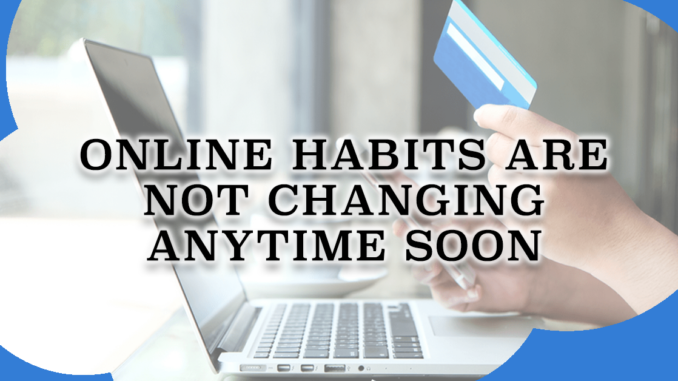
In a breath of positive news, a survey of a billion shoppers from 40 countries released on April 14 indicated that the digital gains retailers have experienced during the global crisis extended their growth into the first quarter of 2021.
According to the Salesforce Q1 Shopping Index, global digital commerce went up 58 percent in Q1 of the year, while U.S. consumers grew domestic online sales by 45 percent, a fast pace that the software maker said even outpaced the holiday-heavy fourth quarter’s 43 percent progression.
The continued expansion of digital sales, as well as the trend’s extension into the new year, should help remove fears that the recent surge in online shopping is losing steam.
“Retailers were forced to be scrappy last year as they reacted to an influx of new digital shoppers and embraced new tactics like curb-side pickup to help keep consumers safe,” said Rob Garf, VP and GM of retail at Salesforce. “The growth in digital commerce over the first quarter is a signal that retailers will need to continue to scale their investments in digital while refocusing the in-store experience.”
The software confirmed the need for retailers to produce experiences that are both immersive and contactless to balance the requirements and meet the needs of increasingly digital consumers.
Examining 22 Billion Visits To 2,000 Different Sites
An analysis of 22 billion visits to nearly 2,000 different digital commerce sites, Salesforce is in a critical position to scout trends and data in real time. Accordingly, the study showed that daily online spending in Q1 peaked in the U.S. on March 17, reflecting a 117 percent year-over-year advance that came at a time when the stimulus cheques were being handed out.
At the same time, the new data show that people were not only shopping more online but were also spending more when they did. Officially, Q1 website traffic grew 27 percent while the average amount spent per visit jumped by nearly one-third from the year before.
Small pockets of outsized growth were seen in luxury handbags (up 95 percent), home appliances (up 96 percent) and sporting goods (up 110 percent) Salesforce said. On the other hand, though it cannot really be called a negative aspect, the survey concluded certain categories lagging the broader digital trend, with segments like luggage (up 8 percent), home decor (up 40 percent) and active apparel (up 42 percent
Taken together, the average order size in the U.S. rose about $5 last quarter versus a year ago to more than $103 per transaction, even though the average discount offered by retailers fell to 17 percent — the lowest rate in at least two years.
“The Q1 data indicates that the habits formed over the course of the year and the 2020 holiday season are here to stay,” Salesforce said, adding that retailers are going to have to rethink what the “role of the store” actually is, as well as the role employees play in helping to fulfill the surge in digital orders.
Devices Play a Decisive Role
The Shopping Index showed that the pace of growth of mobile transactions, in the bigger picture of digital commerce, was leading the way. However, the software firm’s analysis of browsing, buying and abandonment rates were contradictory, widely depending on the type of digital device being used.
Salesforce found that while people buy more when browsing on their mobile phones — and abandon saved items in their carts less — when they do their shopping from a computer.
According to the Shopping Index, 68 percent of digital commerce in the U.S. was done via mobile phones in Q1, versus 28 percent of consumers doing their shopping with a computer. However, when it comes to ordering things, those numbers get a lot closer, with mobile buying rate slipping to 55 percent and the computer buying rate rising to 40 percent.
Cart abandonment rates also showed a bias for bigger screens, with 94 percent mobile shoppers leaving a site without buying the items they saved, versus just 88 percent of computer shoppers walking away empty handed.
Expectation Versus Reality of Digital Growth
PYMNTS’ Global Digital Shopping Index which showed consumers' digital shopping channel use increased by 60 percent since the COVID shutdowns kicked in in March 2020.
Leave a Reply